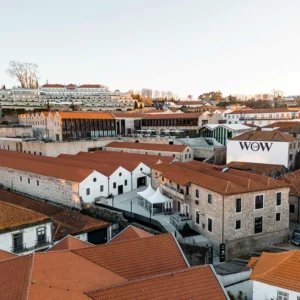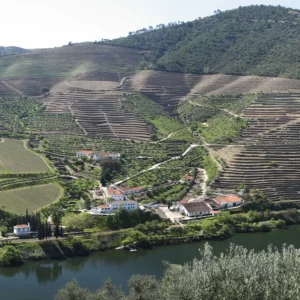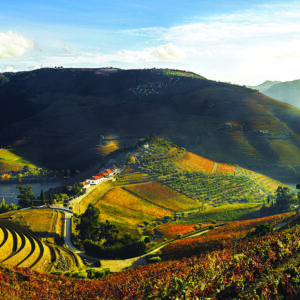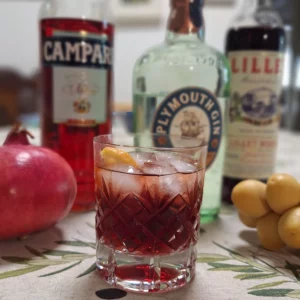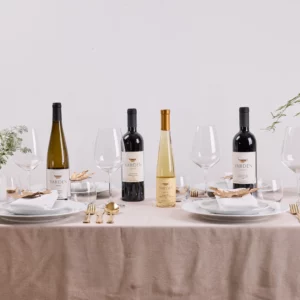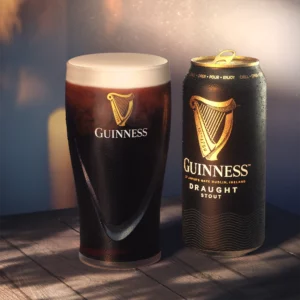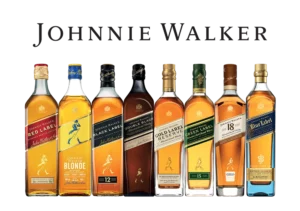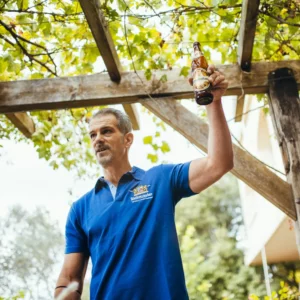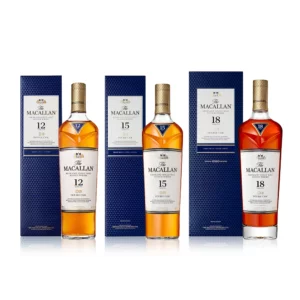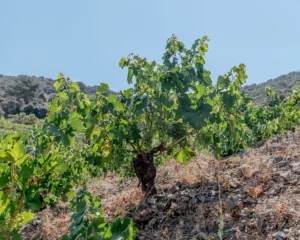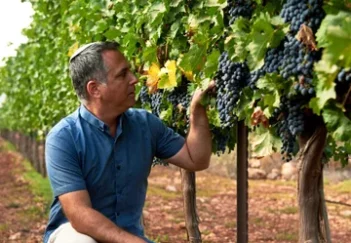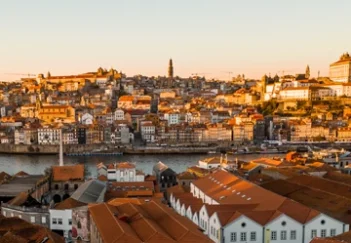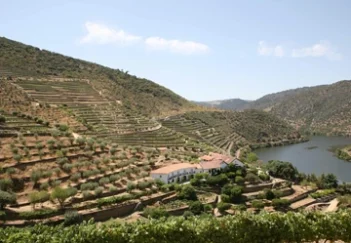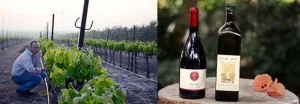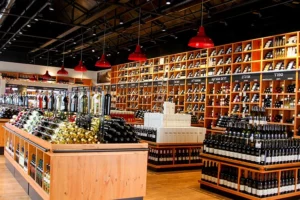When I came to Israel the main spirits were made by the wineries. Carmel Mizrahi made a product from imported molasses called ‘Tehila’, which was a poor imitation of Tequila. They also had products like Captain Rum and Lord Gin. You get the idea and can imagine the quality. All these disappeared when the import gates opened and the big global brands arrived. When that happened, the feinschmeckers chose Scotch whisky and the prize for volume went to vodka. It was only in the last 15 years that a local artisan distillery trend began, but on a very small scale. Julius Distillery led the way, followed by the likes of Golani, Pelter, M&H and Yerushalmi. The one that reached the furthest in international circles is the M&H Whisky Distillery that has brought Israeli whisky to the world.
The spirit of choice in the Jewish world is whisky, especially Scotch malt whisky (without an ‘e’) as opposed to American, Canadian or Irish whiskey (with an ‘e’). The rise of the Kiddush Clubs brought the new passion for whisky into the synagogue, and the growing number of whisky mavens would love talking about it, comparing notes almost as much as drinking it. Part of the reason for its prominence was in my opinion, because whisky was regarded as ‘safe treif.’
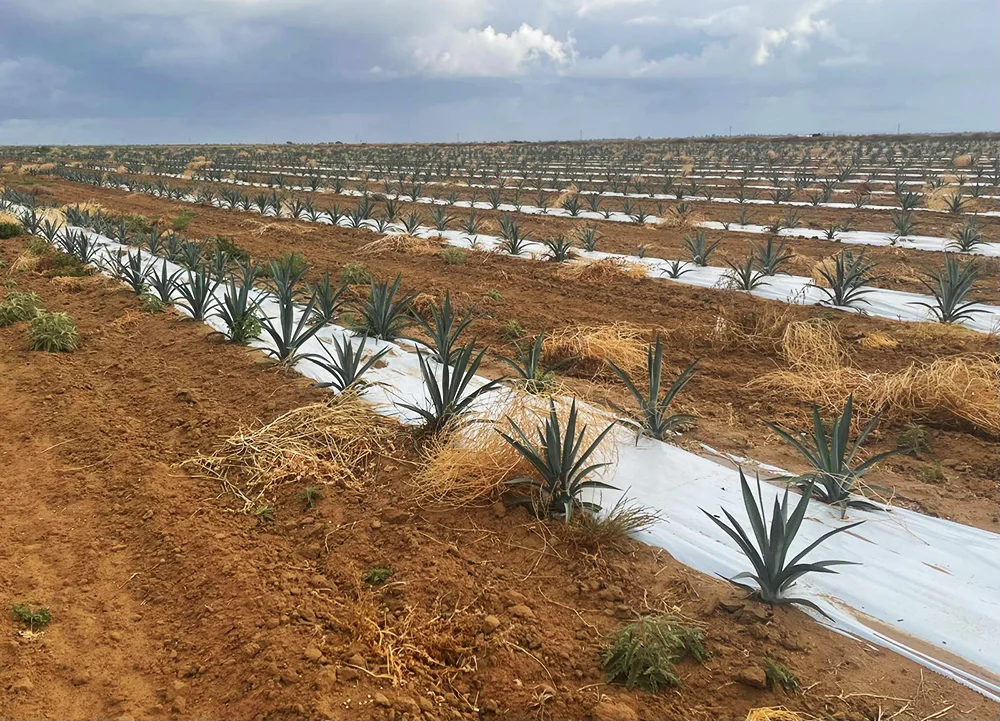
So, when New York lawyer Avi Leitner was invited for a tipple on a visit to Mexico, he asked for a whisky. Why wouldn’t he? His hosts sniggered amongst themselves, and he was told in no uncertain terms “well here, we drink Tequila.” Thus, Leitner was introduced to a whole new world. He remembers Tequila as something you drank at a High School party to get drunk. After his introduction to the quality and variety of Tequila, he described it as every bit as complex and interesting as Scotch.
Tequila is a spirit made in Mexico from the blue agave plant. It is made from the pina, the heart of the plant that looks a little like a pineapple. It is cooked to break it down, crushed to make a mash, fermented and then distilled twice. Pot stills give a more characterful expression, continuous stills a more commercial pareve result. Tequila is part of the Mezcal family. In the same way as Cognac is a brandy, but not all brandy is cognac, tequila is a mezcal, but not all mezcal is tequila. Emily Price in Forbes described the differences in this way: “Tequila is the refined cousin who always follows the rules, the mezcal is the artsy sibling who is always experimenting.”
The product once did not have a good image. I asked someone what they knew about Tequila, and they immediately responded: “Yuk, is that the one with a worm in it?” In fact the dreaded worm does not appear in Tequila. If one appears at all, it will be in a cheap bottle of Mezcal. In popular culture the way to drink Tequila in a bar was immortalized in films. It was served in a shot glass with salt and a slice of lime, and required a ‘lick, sip and suck’ in swift succession. I first became aware of Tequila in the cocktail Tequila Sunrise. When I took my first steps in the drinks industry in Britain every cocktail list seemed to have it. The mixture of tequila, orange juice and grenadine was striking to look at particularly in a tall highball glass, hence its popularity.
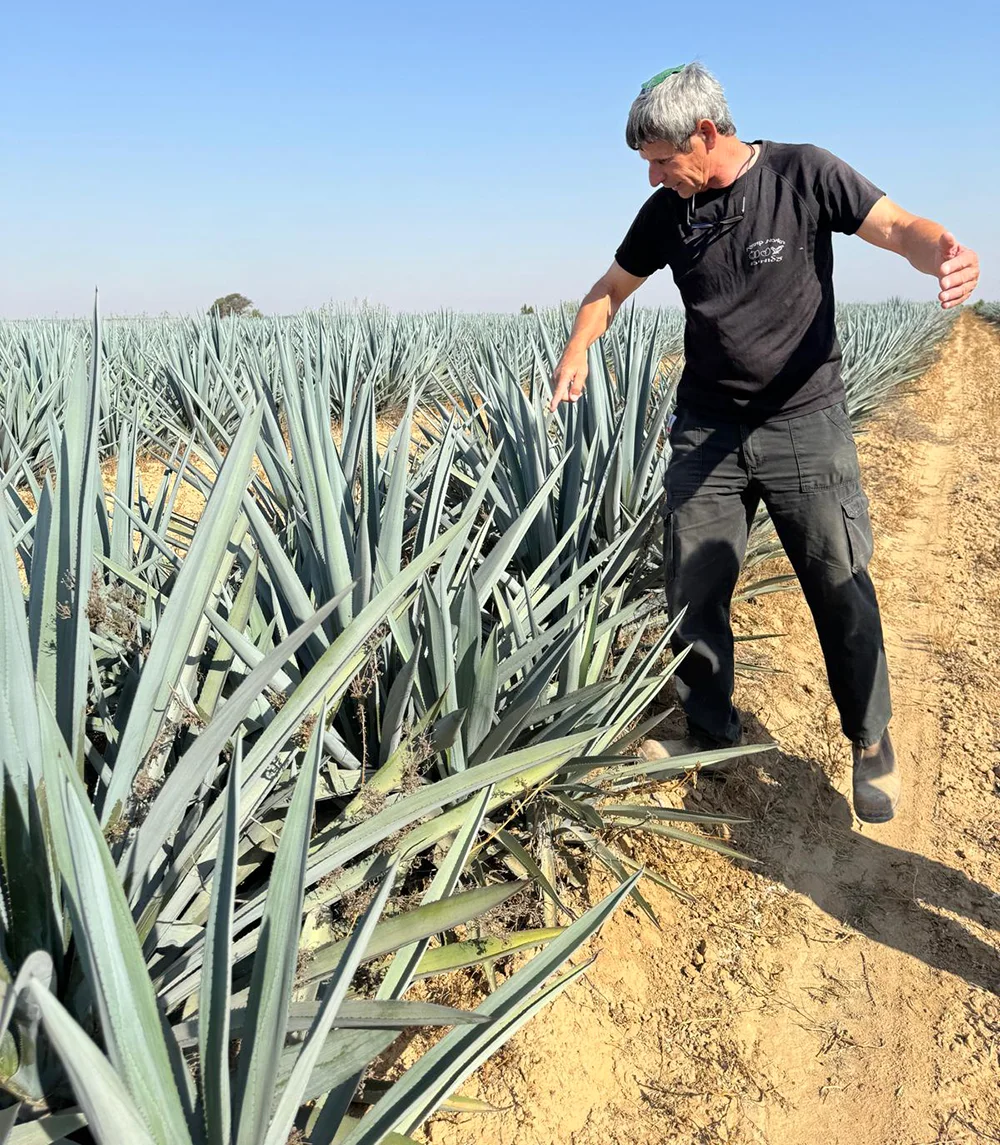
These days Tequila has a more regal image. Perhaps it is most famous internationally as the integral part of the Margarita cocktail. Along with a Negroni and Bloody Mary, it is my favorite cocktail. It is made from Tequila, the orange flavored Triple Sec and freshly squeezed lime juice, and served with salt around the rim of the glass. It has its own glass, which is a variation of the old Champagne coupe (a broad, flat and shallow glass). Though invented in the 1930s, the Margarita has stood the test of time and is usually part of even the shortest cocktail menu. It is zingy and refreshing. A more recent trend is the understanding is that quality Tequila is a far more rewarding product and may be enjoyed differently. The dictionary of Tequila includes words such as: Joven, Bianco or Silver (young), Reposado (aged in oak casks), Anejo (barrel aged for a minimum of one year) and Extra Anejo (aged in casks for at least three years.) The connoisseur will most likely nurse it in a brandy balloon, neat or on the rocks, and sip it slowly with occasional gentle swirling to release aromas.
I met Avi Leitner, a veteran oleh, at Cafeneto in Ra’anana. I was expecting some slickly dressed entrepreneurial whizz kid, bristling with over confidence with well-rehearsed marketing platitudes. When he came in, he walked right past me, and I did not give him a second look. However, when we finally hooked up, he was the opposite of what I was expecting. He was like any unassuming New York lawyer and I thought “what a nice guy”, but I did not detect passion, drive or the vision of a dreamer. However, though there is no lack of Jewish New York lawyers who made Aliyah, only one had has planted Blue Agave in the Negev in order to make an Israeli expression of a Tequila-like spirit. Yet again I learnt you should not judge a book by its cover. As Leitner told me his story in a slightly self-depreciating, laid back way, I was gradually struck by all the things I missed. The three D’s, determination, drive and a dream, were there alright, but just slightly camouflaged.
When Leitner began to appreciate the nuances of Tequila, he could not help notice the conditions where the Blue Agave was grown. A mischievous idea came to him: why not try to grow it in the Negev? He was not an entrepreneur, agriculturist or even in the drinks business, yet in the spark of an idea, he became all three. Of course he had to have exhaustive patience and reserves of determination he did not know he possessed. The Israeli bureaucracy stood in his way, but if Leitner could get not get in the door, he would come down the chimney. The Ministry of Agriculture prohibited him from bringing in the plants, so he brought in cell tissue, grew them in a greenhouse for a year, and only then had the plants in hand. He also had to find someone who wanted to grow it.
He found willing partners in Kibbutz Alumim in the Western Negev and in Eran Braverman, he discovered a farmer who would have the same passion and eagerness to learn. They wanted to do it right. Taking advice from Mexican consultants at every step, he utilized Braverman’s skills as a farmer and the supportive commitment of the partners at the Kibbutz. They combined Israeli agri-tech and Zionist ingenuity with the natural attributes of the Negev Desert, to plant 350 dunams of Blue Agave in the Negev. The next objective will be building a distillery. Leitner does not just want to grow something unique in Israel, he wants to produce the first authentic Tequila style Mezcal, home grown, distilled and matured in the Holy Land. However he can’t call it Tequila! That will be a challenge. Imagine the M&H Distillery having to market their world class product without using the word ‘whisky.’ In the meantime, Leitner has got closer to the spirits industry, speaking to all the Israeli players and he became an investor in the Yerushalmi Distillery which produces whisky. A good example for him is the very successful Golani Distillery at Katzrin. Leitner describes owner Davi Zibell as a “mentor, consultant and model”.
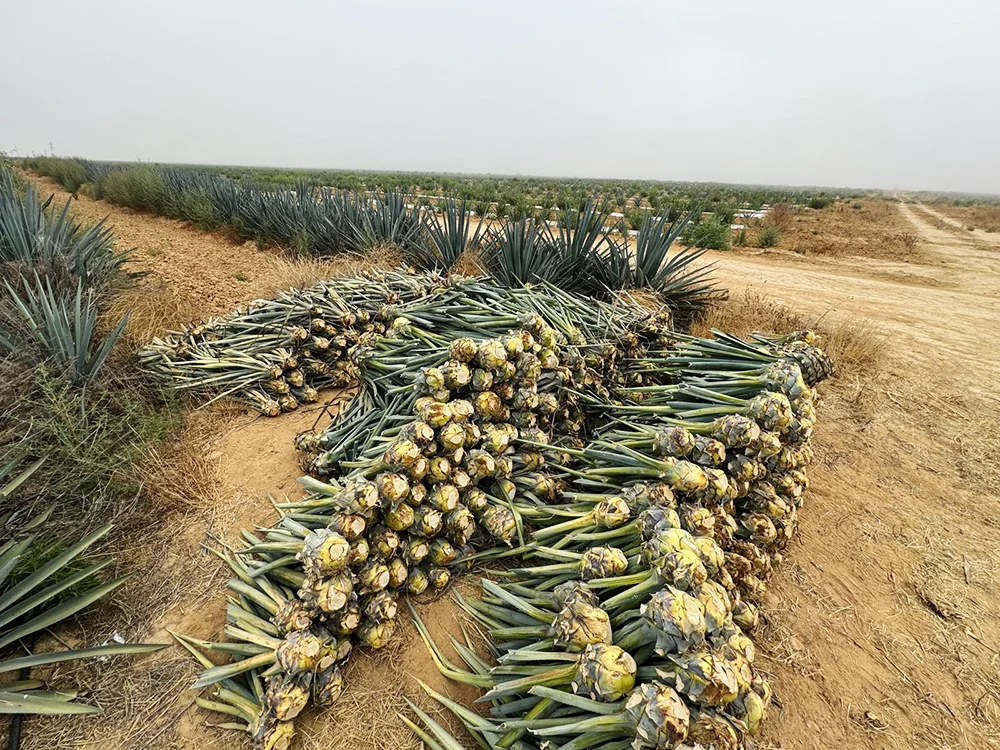
The principle of investing in agriculture in the Negev began with none other David Ben-Gurion, the founding father of Israel. He planted Agave plants (though not the Blue Agave) at Moshav Gilat in the Negev in the 1950s. Their purpose was to make rope, but when synthetic fibers came to be used, the plants were just left as a memorial to what seemed as a good idea at the time. After October 7th 2023, the investment became an even greater mitzvah (good deed.) Kibbutz Alumim was one of those attacked by Hamas. Nineteen Thai and Nepalese workers were murdered in cold blood by the brutal terrorists. Two were kidnapped to Gaza, one was released, but the other is still there, captive in the Sinwar’s tunnels. The plight of the foreign workers is sometimes forgotten because of the sheer mass of the horrors, but they came to work hard with a smile, showing great loyalty and they were not part of any local dispute. They were just caught up in the nightmare. It showed the brutality of Hamas that they were not spared. The memory of each and every one of them is a blessing. May their families know no more sorrow. Leitner’s initiative offers hope and support, and in the future tourism and employment in a region so scarred, where they experienced the most unbelievable and unfathomable expression of evil in our times.
Leitner, president of the Blue Agave Israel Group and his partner, Avi Rosenfeld, have done the minimum public relations, preferring to wait until he has a product to show. He is not into gimmicks and does not have to resort to them, because he will be the first. Recently he took a group of journalists and industry influencers to see the fields of Alumim growing row upon row of Blue Agave; An amazing and impressive sight. No story is needed to embellish the facts. Funnily enough, in Israel good ideas are copied, and success can have many fathers. Imitation is the sincerest form of flattery. Do you remember how many Frozen Yoghurt stores and Sushi restaurants instantly opened when these concepts first came to Israel? Well another company has been formed called Negave Estates. Note the play on words between Negev and Agave. They have done the opposite to Leitner, immediately marketing at the outset and outlining their vision. They have a glossy website, full of promises. They will be making their first product distilled in Tequila country in Mexico, but will mature it in Israel (like Thinkers Distillery), but as of yet, they are still at the very earliest stage, so even if the vision is exciting, the marketing noise may be premature. However, we will be watching them closely too. In the end there is a place for everyone (as is the case with the plethora of new Israeli whiskies) and one start-up will help the other.
Avi Leitner is now sixty years old. Talking to him, I realized that gloss and marketing slogans do not make authenticity. He is totally authentic and is on a journey which he has forged on his own. When in his mid-seventies, the legendary Leonard Cohen looking back described himself at sixty “as just a kid with a crazy dream.” That fits. Slowly slowly, as quickly as agriculture allows, Avi Leitner’s crazy dream is coming to fruition. Tequila Sunrise in the Near East, takes on a new meaning when Blue Agave is flourishing in the Negev Desert.
Adam Montefiore is a wine trade veteran and winery insider turned wine writer, who has advanced Israeli wines for 38 years. He is referred to as the English voice of Israeli wine and is the Wine Writer for the Jerusalem Post. www.adammontefiore.com


